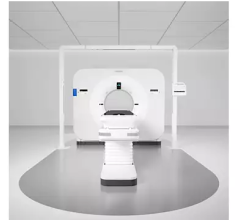May 19, 2014 — A Japanese multi-institutional study1 of 1,194 patients, has found that individuals with five to 10 tumors treated with Gamma Knife stereotactic radiosurgery alone (no whole brain radiation therapy) fared as well as a group with two to four tumors who received this radiosurgery-only treatment. The study on survivability after Gamma Knife radiosurgery was published online in The Lancet Oncology on March 10.
According to principle investigators Masaaki Yamamoto, M.D. and Toru Serizawa, M.D., these findings challenge the practice of inconsistent use of radiosurgery in patients with five or more brain metastases, for whom whole brain radiation therapy (WBRT) is often administered. Neurocognitive deficits are a well-known side effect of WBRT.
"The study provides evidence in favor of offering Gamma Knife radiosurgery as the frontline treatment to patients with more than four brain mets," Yamamoto says. "It also provides a compelling reason to revise current guidelines for the management of these patients."
He adds that an ongoing prospective randomized study by The North American Gamma Knife Consortium could reinforce the implications of their study. The consortium is exploring neurocognitive outcomes in patients either treated with Gamma Knife alone or with whole brain radiation therapy for five or more brain mets (NCT01731704). The results are expected to further confirm the role of Gamma Knife radiosurgery without WBRT versus only WBRT for multiple brain mets.
Equal Overall Survival
The prospective observational study, completed by the Japanese Leksell Gamma Knife (JLGK) Society recruited 1,194 participants with one to as many as 10 brain mets from 23 hospitals in Japan. All patients were treated with single-session radiosurgery using Leksell Gamma Knife.
Median overall survival after Gamma Knife radiosurgery in all patients was 12 months. Median overall survival post-treatment was 13.9 months for patients with a single lesion. In both the 2-4 mets group and 5-10 mets group, median overall survival times were 10.8 months.
According to Yamamoto, "these results suggest that Gamma Knife radiosurgery without WBRT as the initial treatment for patients with five to 10 brain metastases is 'non-inferior' to stereotactic radiosurgery without WBRT in patients with two to four brain metastases — in terms of overall survival and most of the secondary endpoints.
"The essential criticism of employing Gamma Knife radiosurgery without WBRT for patients with several lesions is that microscopic tumors might go untreated, necessitating salvage stereotactic radiosurgery or an alternative therapy," he adds. "Thus, WBRT is widely advocated. However, a recent study showed that WBRT is only able to prevent the emergence of new tumors for no more than six months post-treatment. Many patients with brain mets can survive for more than a year, thereby outliving the effects of WBRT."
Penny K. Sneed, M.D., professor and vice chair, Department of Radiation Oncology, University of California, San Francisco, remarks that the multicenter research is an "important prospective study confirming what many Gamma Knife users have observed retrospectively for many years — that the number of brain metastases beyond a single lesion is not very important for survival time, local recurrence or toxicity, as long as the total tumor volume is limited."
References:
1. Yamamoto M, Serizawa T, Shuto T, et al. Stereotactic radiosurgery for patients with multiple brain metastases (JLGK0901): a multi-institutional prospective observational study. The Lancet Oncol 2014:15:387-395
For more information: www.elekta.com


 December 11, 2025
December 11, 2025 









